Vital Stats
Name: Yellowstone
Type: Supervolcano
Eruption Status: Active
Last Eruption: Approximately 640,000 years ago
Location: 44.4280° N, 110.5885° W
Northwestern Wyoming/Southeastern Idaho
We continued our journey north from Yellowstone Lake along the Southern Loop Road. The Yellowstone River runs adjacent to the road and here you can find some great fishing spots. LeHardys Rapids is one of them. In the summer months, you can watch the cutthroat trout doing acrobatics as they leap up over these rapids in seach of their upstream spawning grounds. Keep on going through the heavy forest and you’ll come to a section of the park that really stinks.
You get out of your car at a place called Mud Volcano. Whewie! I wasn’t kidding, was I? The place smells quite a bit like you left some eggs out on the porch to rot for a month. But the smell should tip you off to some pretty fascinating volcanic features. So let’s go take a look around.
This area of the park – Mud Volcano and Sulfur Caldron (just up the road) – is one of Yellowstone’s most active areas. The ground actually bulges here in a place called Sour Creek Dome. (I can’t imagine why they would name a creek that, can you? Must have something to do with the rotten egg thing.) This area of the park has been known to rise several inches over the course of a year. Of course, as the volcano breathes, the ground level can sink back down, so no need to panic just yet.
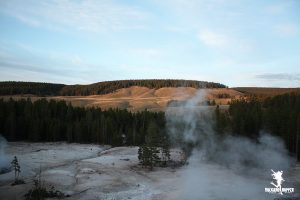
Okay, so where’s this dome? I see you looking around. Look on the east side of the road. See that hill that rises a little like a dome in front of you? Bingo. That’s your huckleberry.
But what is going on with that smell?
Give it a few minutes and you won’t notice it as much any more. What you are smelling is hydrogen sulfide gas. Remember in my introduction to Yellowstone that I talked a bit about mud pots? (Read this post if you need a refresher.) This is one of those mud pots on a grand scale.
There is a 2/3 mile long trail that winds its way through the Mud Volcano area. There are a few steep sections, but it is well worth exploring! Again, if there are areas of boardwalk, make sure to stay on them. This place is piping hot and there’s no need for you to get scorched.
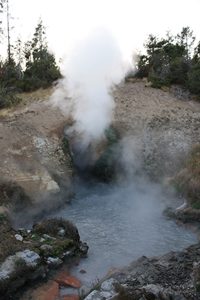
Fresh out of the parking lot, if you head to your right, you’ll come to Dragon’s Mouth Spring. This is one of my absolute favorite features of the Mud Volcano area. A pool of water flows outward from a cavern that is tucked into the hillside. Steam puffs from the vent like loud snorts from a dragon. Get quiet for a minute and listen. One seriously could believe there was a dragon hiding in there huffing and puffing. Very cool. Hop over to my Facebook page once you’re done here to watch a video!
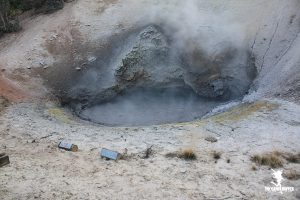
Head a little further up the trail to the Mud Volcano itself. This is where that lovely scent is strongest. The place bubbles and burps as the hydrogen sulfide gas is released. It may look like the mud is actually boiling, but it’s just the gas escaping up into the air.
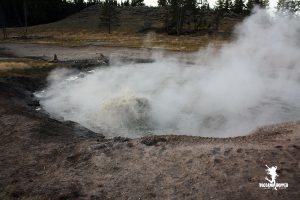
Trekking up the incline, you’ll come across the Grizzly Fumarole where hot gas is escaping through cracks in the ground. You’ll find other pools and mud pots along this trail, such as the Sour Lake, Black Dragon’s Caldron, Churning Caldron, Sizzling Basin, Mud Geyser, and Mud Caldron. And mind your step in the parking lot where Parking Lot Pool bubbled up through a crack in the pavement in 1999. Just a sizzling reminder that this volcano won’t be tamed.
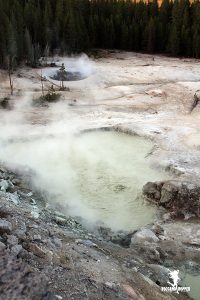
Head up the road until you reach Sulphur Caldron. It’s not that far of a drive – only 1/10 of a mile or so. This place is seriously stinky too. This place is one of the most acidic hot springs in the entire park. The pH level of these springs ranges from 1-2. That’s about like swimming in stomach acid. The water is also full of sulphur, which gives the place an eerie yellow tinge. I can’t say I was even remotely tempted to go for a swim.
Heading a further North on the loop road, the cluster of forest will open up into a wide open expanse. This is the beautiful Hayden Valley. Various creeks and rivers run through the lush landscape that is surrounded by mountains. Glaciers redecorated the place after the the last major eruption, giving it the marshy landscape that you’re seeing today.
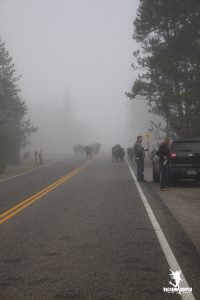
Don’t just barrel through here on your way through. Chances are you can’t anyway! Bison traffic jams are common here as herds wander down the road or across it in search of a snack. Keep your eyes peeled for young bison hanging out with their herd. We were lucky enough to see a few that were just months old! Remember to give them their distance, especially the babies. Momma bison will get aggressive to protect their kids, and they can do a number on not only you, but your car.
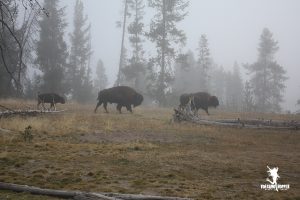
On the east side of the road, you can often find some spotters camped out with a telephoto viewing lens. If you see a little crowd hanging out with them, get out and go have a look. Bears and wolves commonly frollick through this area, and you can safely watch them through the spotter lenses. These people are usually very nice, and can tell you some awesome stories about the animals in the park.
Up Next: Yellowstone Canyon
And don’t forget to hop over to the Volcano Hopper Facebook page for many more photos and a video of Dragon’s Mouth Spring!
Copyright © 2017 Volcano Hopper. All rights reserved.

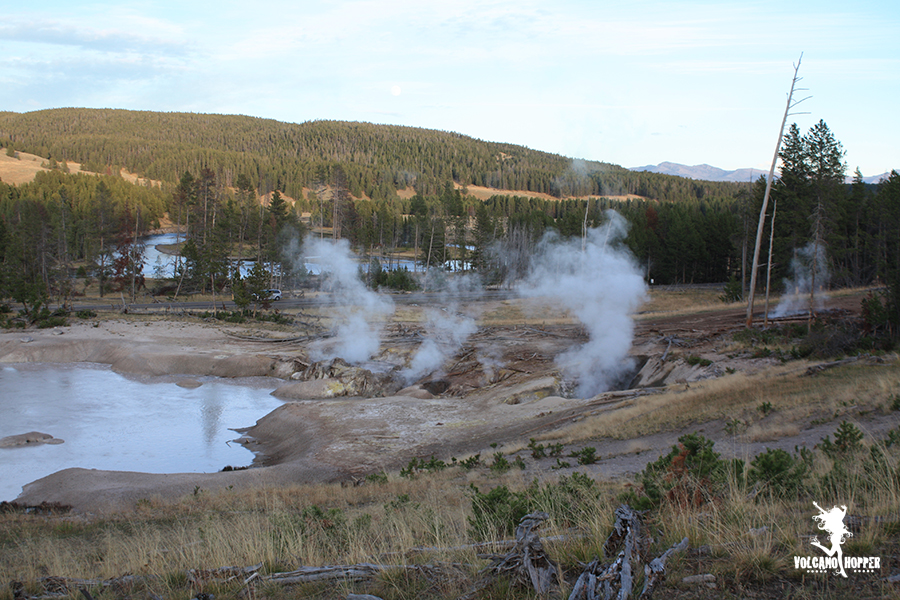
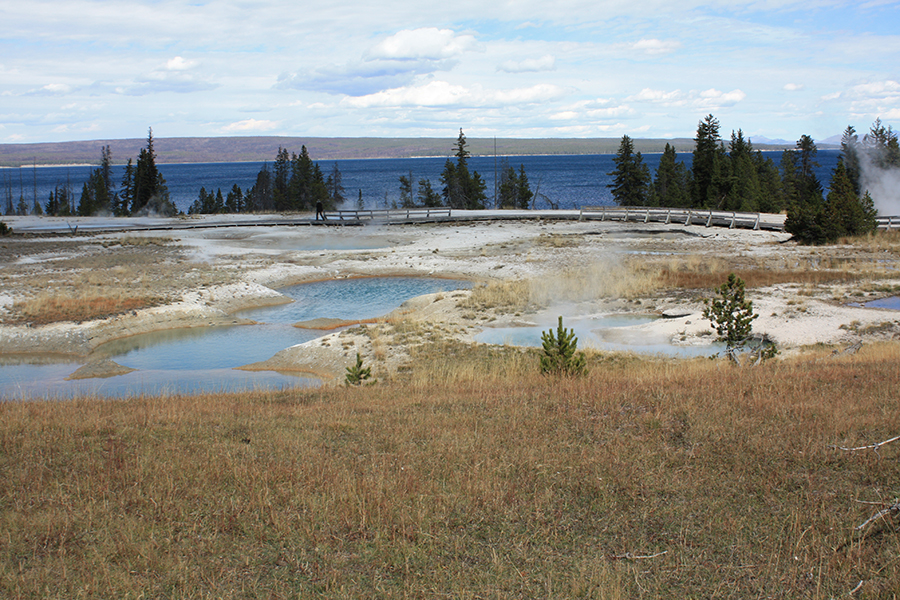
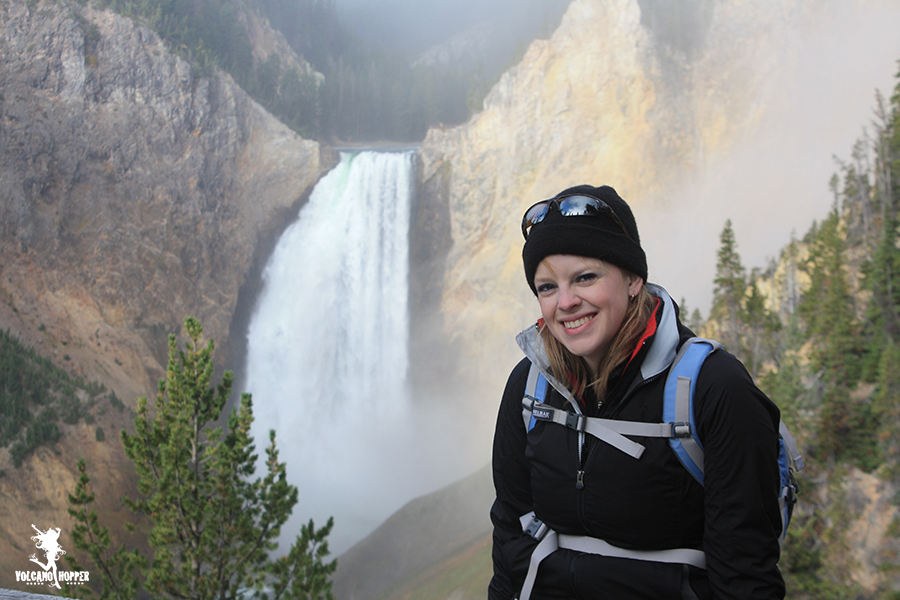
I spent a great deal of time to locate something
similar to this
I spent a lot of time to locate something similar to this
Thank you for the terrific post
You’re welcome! Glad you enjoyed it.